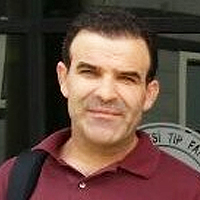Navigating Neurodegenerative Disorders: A Comprehensive Review of Current and Emerging Therapies for Neurodegenerative Disorders
Published on: 4th April, 2024
Neurodegenerative disorders (NDDs) pose a significant global health challenge, impacting millions with a gradual decline in neurons and cognitive abilities. Presently, available NDD therapies focus on symptom management rather than altering the disease trajectory. This underscores the critical necessity for groundbreaking treatments capable of addressing the root causes of neurodegeneration, offering both neuroprotection and neuro-restoration. This in-depth review delves into the forefront of emerging NDD therapies, encompassing gene therapy, stem cell therapy, immunotherapy, and neurotrophic factors. It sheds light on their potential advantages, hurdles, and recent advancements gleaned from both preclinical and clinical studies. Additionally, the document outlines existing NDD treatments, spanning pharmacological and non-pharmacological interventions, along with their inherent limitations. The overarching conclusion emphasizes the immense potential of emerging therapies in NDD treatment, yet underscores the imperative for continued research and optimization to ensure their safety, efficacy, and specificity.
The Potential Use of Dimethyltryptamine against Ischemia-reperfusion Injury of the Brain
Published on: 19th April, 2024
Ischemia-Reperfusion Injury (IRI) is the outcome of two intertwined pathological processes resulting from the shortage of blood flow to tissues and the subsequent restoration of circulation to a previously ischemic area. IRI (sometimes just one side of the dyad) remains one of the most challenging problems in several branches of emergency medicine. Mitochondrial and endoplasmic reticulum dysfunction is a crucial pathological factor involved in the development of IRI. The sigma-1 receptor (Sig1-R) is an intracellular chaperone molecule located between the mitochondria and endoplasmic reticulum with an apparent physiological role in regulating signaling between these cell organelles and serves as a safety mechanism against cellular stress. Therefore, amelioration of IRI is reasonably expected by the activation of the Sig1-R chaperone. Indeed, under cellular stress, Sig1-R agonists improve mitochondrial respiration and optimize endoplasmic reticulum function by sustaining high-energy phosphate synthesis. The discovery that N, N-dimethyltryptamine (DMT) is an endogenous agonist of the Sig1-R may shed light on yet undiscovered physiological mechanisms and therapeutic potentials of this controversial hallucinogenic compound. In this article, the authors briefly overview the function of Sig1-R in cellular bioenergetics with a focus on the processes involved in IRI and summarize the results of their in vitro and in vivo DMT studies aiming at mitigating IRI. The authors conclude that the effect of DMT may involve a universal role in cellular protective mechanisms suggesting therapeutic potentials against different components and types of IRIs emerging in local and generalized brain ischemia after stroke or cardiac arrest.
Unlocking the Transformative Power of Synthetic Biology
Published on: 18th April, 2024
Artificial Intelligence (AI) combined with Synthetic Biology has the potential to change the way we approach medicine, agriculture, and manufacturing. AI automates tasks, optimizes experimental designs, and predicts biological behaviours, resulting in more efficient design and engineering of biological systems. However, there are challenges such as data limitations, interpretability issues, and ethical considerations like biosafety and biosecurity concerns that need to be addressed. AI can be used to analyze vast amounts of data and identify patterns. This has led to successful applications of AI in high-throughput screening and biomanufacturing, which can drive innovation and address critical challenges. AI-powered closed-loop systems for real-time monitoring and control of biological processes also show promise in providing real-time feedback and optimizing systems on the fly. Despite these advancements, it's important to consider ethical implications to ensure the responsible development and application of AI in synthetic biology. Proper consideration of challenges and ethical considerations can help leverage the power of AI to drive innovation and tackle pressing societal challenges. Overall, the potential of AI in synthetic biology is significant. By addressing challenges and ethical considerations, we can use them effectively to solve pressing problems.
Advancing Oral Health and Craniofacial Science through Microchip Implants
Published on: 25th April, 2024
Microchip implants have emerged as transformative tools in the realm of oral health and craniofacial science, offering novel solutions to longstanding challenges. This paper aims to explore the diverse applications of microchip technology in dentistry and craniofacial medicine, envisioning a future where these implants play a pivotal role in diagnostics, treatment modalities, and ongoing patient care. The integration of microchips enables real-time monitoring of oral conditions, facilitating early detection of dental issues and providing personalized treatment strategies. Additionally, these implants open avenues for smart prosthetics and orthodontic devices, optimizing patient comfort and treatment outcomes. However, ethical considerations, patient perceptions, and the societal impact of such technology should also be addressed. By examining the multifaceted implications and applications of microchip implants in oral health and craniofacial science, this research overview seeks to contribute valuable insights to the intersection of technology and healthcare in the dental domain.

HSPI: We're glad you're here. Please click "create a new Query" if you are a new visitor to our website and need further information from us.
If you are already a member of our network and need to keep track of any developments regarding a question you have already submitted, click "take me to my Query."
















